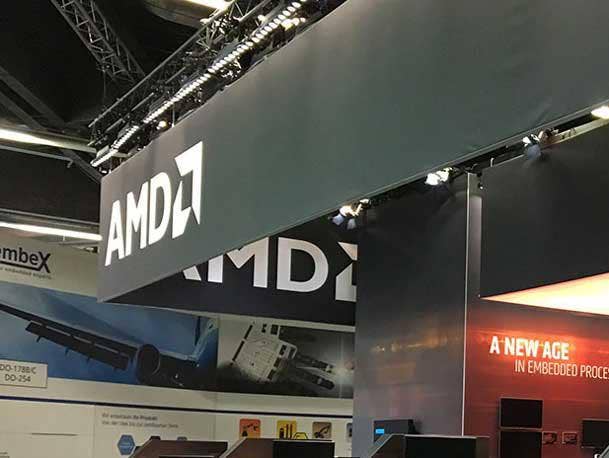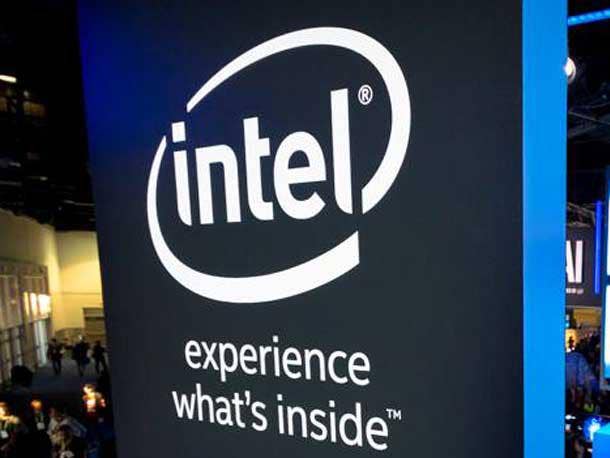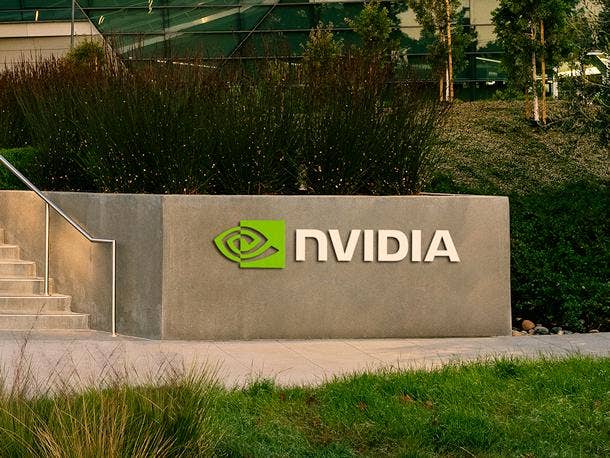Arm IPO’s 10 Confirmed And Potential Investors: Why Apple, Intel And Nvidia Are Among Them
The British chip designer reveals that AMD, Apple and Google are among the potential ‘cornerstone investors’ in its much-hyped initial public offering. Two others, Intel and Nvidia, confirmed their plans to invest. ‘Arm has played this absolutely foundational role in the tech business but in a pretty much invisible way to most of the outside world for a very long time,’ an analyst says.

British chip designer Arm has disclosed that AMD, Apple and Google are among the potential “cornerstone investors” in the company’s much-hyped initial public offering. Two other named investors, Intel and Nvidia, confirmed that they plan to invest in Arm’s IPO.
In an updated IPO filing Tuesday, the Cambridge, U.K.-based semiconductor company divulged the 10 cornerstone investors and said it will seek a valuation of up to $52 billion when it lists under the “ARM” ticker on Nasdaq, reportedly happening next week.
[Related: Arm’s IPO Filing: Revenue, China Reliance, Ampere Stake And Other Things To Know]
The filing said Arm plans to offer 95.5 million American depository shares in the range of $47 to $51 apiece. The company’s current owner, Japanese investment giant SoftBank Group, plans to own roughly 90 percent of Arm’s shares following the IPO, according to the filing.
Arm said the 10 cornerstone investors—which also include Samsung Electronics and MediaTek—have “indicated an interest in purchasing up to an aggregate of $735 million” of its shares in the IPO. However, the company added, “these indications of interest are not binding agreements or commitments.”
While Amazon reportedly held talks earlier this summer to invest in Arm’s IPO, the e-commerce giant no longer plans to do so, Reuters reported last week.
Bob O’Donnell, president and chief analyst at TECHnalysis Research, said the investment interest by several major tech and semiconductor companies reflects the “absolutely critical importance of Arm and its continued strong existence and development.”
For years, Arm’s architecture has served as the foundation for chips in most of the world’s smartphones, and the company is now starting to gain momentum in the server and PC markets. The chip designer’s technologies are also prevalent in industrial IoT and embedded devices as well as vehicles.
The potential investors include several companies that develop chips using Arm’s instruction set architecture,and, in some cases, processor designs. Among the 10, Apple completely relies on Arm’s architecture for its entire portfolio of devices while others use Arm for some products.
“Their whole future is dependent on the Arm architecture, and they want to keep the people who built this in the first place going,” O’Donnell told CRN in a recent interview.
The investor list also includes Taiwanese foundry giant TSMC, which manufactures a significant portion of chips for Arm’s customers. Samsung too fabricates Arm-based chips while also using those chips for its various devices, such as the Galaxy S23 smartphones and Galaxy Tab S9 tablets.
Then there’s Intel. While the semiconductor giant relies on the x86 instruction set architecture for its CPUs, it develops some chips that use Arm technology, such as its infrastructure processing units. But the chipmaker also hopes to manufacture a large share of Arm-based chips for other companies as part of its drive to build a significant contract chip manufacturing business with Intel Foundry Services.
“Arm has played this absolutely foundational role in the tech business but in a pretty much invisible way to most of the outside world for a very long time,” O’Donnell said.
What follows are summaries of the 10 confirmed and potential investors in Arm’s IPO as well as explanations of how each company is connected to the British chip designer.

AMD
An AMD spokesperson declined to confirm the chip designer’s plan to invest in Arm’s IPO and referred to what Arm’s updated IPO filing said about potential investors.
While Santa Clara, Calif.-based AMD relies on the x86 instruction set architecture for the processing cores inside its client and server CPUs, it uses Arm’s architectures within other chip products. These include AMD’s Pensando data processing units, Alveo accelerator cards, Versal adaptive system-on-chips, among others.
AMD also uses Arm as the basis for the secure co-processor, known officially as the Platform Security Processor, that is embedded within its EPYC server CPUs to enable security features.
While the chip designer relies on Arm for several products, it’s looking to stave off competition from companies such as Amazon Web Services and Ampere Computing that are developing Arm-based CPUs with high core counts and high energy efficiency for cloud computing.
AMD plans to compete with Arm-based cloud CPUs with the recently launched EPYC 97X4 CPUs, which cap at 128 cores and come with energy efficiency advantages over its vanilla server chips.

Apple
Apple did not respond to a request to comment about its potential plan to invest in Arm’s IPO.
A longtime customer and co-founder of Arm, Apple has relied on the company’s chip architecture for processors inside all its mobile devices, including the iPhone and iPad.
In 2020, the Cupertino, Calif.-based electronics giant signaled a plan to embrace Arm across its entire hardware portfolio by transitioning its Mac computers from Intel CPUs to Arm-compatible M-series system-on-chips such as the M1 and M2. Three years later, Apple completed that transition with M-series chips powering its entire line of Mac laptops and desktops.
More than a decade ago, Apple began designing custom Arm processors for iPhones and iPads rather than using the semiconductor company’s pre-developed processor designs. The iPhone maker expanded upon that trend with its M-series chips, which are based on in-house designs rather than Arm’s.
In Arm’s updated IPO filing Tuesday, the company said it has entered a “new long-term agreement with Apple that extends beyond 2040, continuing our long-standing relationship of collaboration with Apple and Apple’s access to the Arm architecture.”

Google did not respond to a request to comment about its potential plan to invest in Arm’s IPO.
While Mountain View, Calif.-based Google has relied on Arm’s pre-developed processor designs for the chips inside its Pixel mobile devices, the company has shown in recent years an increased interest in Arm for its cloud data centers.
The first public display of this interest was Google Cloud’s launch last year of the Tau T2A VMs, which are powered by Ampere Computing’s Arm-based Altra CPUs.
The cloud service provider continued its public support for Arm-based processors with last month’s announcement that Ampere’s new CPU, AmpereOne, would power its upcoming C3A instances.
Behind the scenes, Google has been developing its own custom Arm server processors, according to a report earlier this year from The Information.

Intel
On the day Arm disclosed its list of cornerstone investors, an Intel executive confirmed at an investor conference that the semiconductor giant will invest in the British chip designer’s IPO.
“This morning, we announced that we are an investor in Arm,” said Stuart Pann, senior vice president and general manager of Intel’s contract chip manufacturing business, Tuesday.
While Intel is a stalwart champion of the x86 instruction set architecture for its CPUs, the company relies on Arm for other products and hopes its revitalized contract chip manufacturing business can benefit from growing industry adoption of the alternative architecture.
The Santa Clara, Calif.-based semiconductor giant uses Arm technology for non-CPU products such as its infrastructure processing units, which are targeted at cloud infrastructure.
With its contract chip-making business, Intel Foundry Services, the company hopes to convince other companies designing Arm-based chips to use its factories to manufacture the products.
In April, Intel Foundry Services revealed a deeper commitment to manufacturing third-party Arm chip designs through a “multigeneration agreement” with Arm that will “enable chip designers to build low-power compute system-on-chips” on its 18A manufacturing node.
The foundry business said this agreement will include design technology co-optimization efforts that will optimize Arm chip designs for Intel’s 18A process to improve power, performance, area and cost. The agreement will focus on Arm chip designs for mobile devices first, but Intel said the collaboration could eventually expand into automotive, IoT, data center, aerospace and government applications.
Before Intel confirmed its plan to invest in Arm’s IPO Tuesday, Intel CEO Pat Gelsinger had expressed interest in investing in Arm, potentially through a consortium of companies, not long after Nvidia, Intel’s AI chip rival, failed to acquire the chip designer in early 2022 due to regulatory opposition.

Nvidia
An Nvidia spokesperson told CRN Wednesday that the company plans to invest in Arm’s IPO.
“Arm architecture is important to Nvidia’s products and our ecosystem. We are supporting Arm by investing in its IPO,” the spokesperson said.
For the last several years, Nvidia has expanded its purview from designing GPUs to becoming a “full-stack computing company” that not only designs several important components for high-performance computing but also designs systems and software to run a variety of workloads.
Over the course of this evolution, the Santa Clara, Calif.-based company announced in 2020 its plan to acquire Arm for $40 billion in a bid to expand the boundaries of its business even further, which included the possibility of using Arm’s licensing business to license Nvidia’s GPU technology to customers.
At the time, Nvidia had been designing system-on-chips with Arm processor cores for embedded applications, and it was starting to build a GPU-accelerated ecosystem around HPC systems running on Arm-based CPUs. A year after the Arm deal was announced, Nvidia revealed its plan to release an Arm-based data center CPU that would be paired with a GPU in a design disclosed later on.
However, Nvidia’s deal to acquire Arm was foiled in early 2022 after facing significant regulatory opposition over concerns that the company would unfairly use its ownership of Arm’s technology to harm competitors, despite repeated assurances that it wouldn’t.
“The reason why people were concerned with Nvidia’s potential purchase is they didn’t want that control to go to one place. [Arm] really is sort of the Switzerland of tech, and everybody wanted it to continue to be the Switzerland of tech, because they wanted it to be a neutral place where everybody could go,” said O’Donnell, the analyst.
Despite Nvidia’s failure to acquire Arm, the company has remained resolute in supporting the Arm architecture and building products around it, such as the Grace and Grace Hopper Superchips.

Samsung Electronics
Samsung Electronics did not respond to a request to comment about its potential plan to invest in Arm’s IPO.
Based in South Korea, Samsung designs and manufactures several devices such as smartphones, tablets and smart TVs that use Arm-based chipsets and system-on-chips.
The electronics giant designs and manufactures some of these system-on-chips, such as the Exynos lineup for smartphones, while other Arm-based chip products are made by other companies.
Samsung manufactures Arm-based chips through its contract chip manufacturing business, which is the second largest in the world, behind Taiwan’s TSMC.

TSMC
TSMC did not respond to a request to comment about its potential plan to invest in Arm’s IPO.
Based in Taiwan, TSMC is the world’s largest contract chip manufacturer, counting AMD, Apple, Intel and Nvidia as significant customers and producing a significant share of Arm-based chips every year.
As a result, TSMC and Arm have been important and long-standing allies, working together on new initiatives such as TSMC’s 3D Fabric Alliance, which aims to help companies create chips with 3-D silicon stacking and advanced packaging technologies faster.
Mark Liu, TSMC’s chairman, reportedly said Wednesday that the company plans to decide “this week” whether it will invest in Arm’s IPO.

Cadence Design Systems
Cadence Design Systems did not respond to a request to comment about its potential plan to invest in Arm’s IPO.
San Jose, Calif.-based Cadence provides electronic design automation tools that are used to design chips and semiconductor devices, including those that rely on Arm technologies.
The company has strengthened ties with Arm in recent years. In May, Cadence unveiled an expanded collaboration with the chip designer that is expected to help companies tape out Arm-based chips faster—a crucial step before manufacturing begins—using its digital and verification tools.

MediaTek
MediaTek did not respond to a request to comment about its potential plan to invest in Arm’s IPO.
MediaTek is a Taiwan-based chip designer that uses pre-developed Arm processor designs as the basis for chips targeting the smartphone, Chromebook, tablet, IoT and networking markets.
The company reportedly plans to introduce Arm-based CPUs for Windows computers in the future.

Synopsys
Synopsys did not respond to a request to comment about its potential plan to invest in Arm’s IPO.
Mountain View, Calif.-based Synopsys is a provider of electronic design automation tools and silicon technologies that are used to design chips, including Arm-based processors.
In May, the company unveiled an expanded collaboration with Arm around AI-enhanced design that is expected to accelerate the speed at which chips are created.